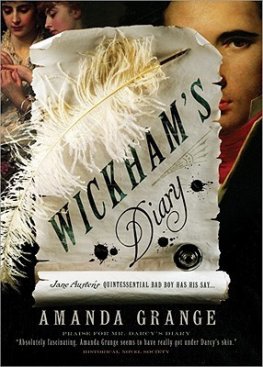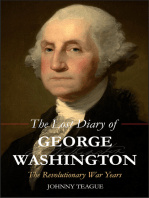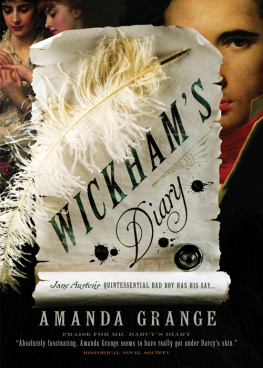George Grossmith - The diary of a nobody
Here you can read online George Grossmith - The diary of a nobody full text of the book (entire story) in english for free. Download pdf and epub, get meaning, cover and reviews about this ebook. year: 1999, publisher: Penguin Books, genre: Detective and thriller. Description of the work, (preface) as well as reviews are available. Best literature library LitArk.com created for fans of good reading and offers a wide selection of genres:
Romance novel
Science fiction
Adventure
Detective
Science
History
Home and family
Prose
Art
Politics
Computer
Non-fiction
Religion
Business
Children
Humor
Choose a favorite category and find really read worthwhile books. Enjoy immersion in the world of imagination, feel the emotions of the characters or learn something new for yourself, make an fascinating discovery.

- Book:The diary of a nobody
- Author:
- Publisher:Penguin Books
- Genre:
- Year:1999
- Rating:3 / 5
- Favourites:Add to favourites
- Your mark:
- 60
- 1
- 2
- 3
- 4
- 5
The diary of a nobody: summary, description and annotation
We offer to read an annotation, description, summary or preface (depends on what the author of the book "The diary of a nobody" wrote himself). If you haven't found the necessary information about the book — write in the comments, we will try to find it.
The diary of a nobody — read online for free the complete book (whole text) full work
Below is the text of the book, divided by pages. System saving the place of the last page read, allows you to conveniently read the book "The diary of a nobody" online for free, without having to search again every time where you left off. Put a bookmark, and you can go to the page where you finished reading at any time.
Font size:
Interval:
Bookmark:

THE DIARY OF A NOBODY
GEORGE GROSSMITH, son of a law reporter and entertainer, was born in 1847. For some years he worked as a journalist, reporting police court proceedings for The Times, and in 1870 began his career as a singer and entertainer. His special connection with Gilbert and Sullivans operas, many of the chief parts of which were his creations, began at the Opra Comique, and from 1881 onwards he played at the Savoy. Leaving there in 1889, he toured Great Britain and the United States as an entertainer and singer until 1901. His A Society Clown: Reminiscences was published in 1888, followed in 1910 by a further volume of reminiscences, Piano and I: Further Remembrances. He died in 1912.
WEEDON GROSSMITH, brother of George, was born in 1854. He was educated at the Slade and the Royal Academy with a view to following a career as a painter, and exhibited at the Grosvenor Gallery and at the Royal Academy. Joining a theatrical company in 1885, he toured the provinces and America, specializing in the representation of characters of the Mr Pooter type. His novel, A Woman with a History, was published in 1896, and the best-known of his many plays, The Night of the Party, in 1901. He eventually took over the management of Terrys Theatre London, appearing in various parts there and elsewhere until 1917, and died in 1919 in London.
ED GLINERT was born in 1958 and read Classical Hebrew, amongst other subjects, at Manchester University. He has written for Private Eye magazine since 1988, as well as many other publications, including the New Statesman, Radio Times and Independent. He is the co-author of Fodors Rock & Roll Traveler U S A and Fodors Rock & Roll Traveler Great Britain and Ireland, and author of A Literary Guide to London in Penguin.
GEORGE AND WEEDON GROSSMITH
Illustrations by
WEEDON GROSSMITH
Edited with an Introduction and Notes by
ED GLINERT
PENGUIN BOOKS
PENGUIN BOOKS
Published by the Penguin Group
Penguin Books Ltd, 27 Wrights Lane, London W8 5TZ, England
Penguin Putnam Inc., 375 Hudson Street, New York, New York 10014, USA
Penguin Books Australia Ltd, Ringwood, Victoria, Australia
Penguin Books Canada Ltd, 10 Alcorn Avenue, Toronto, Ontario, Canada M4V 3B2
Penguin Books (NZ) Ltd, Private Bag 102902, NSMC, Auckland, New Zealand
Penguin Books Ltd, Registered Offices: Harmondsworth, Middlesex, England
First published in book form 1892
Published in Penguin Books 1945
Reissued 1965
Published in Penguin Classics 1999
1 3 5 7 9 10 8 6 4 2
Introduction and notes copyright Ed Glinert, 1999
All rights reserved
The moral right of the editor has been asserted
Except in the United States of America, this book is sold subject
to the condition that it shall not, by way of trade or otherwise, be lent,
re-sold, hired out, or otherwise circulated without the publishers
prior consent in any form of binding or cover other than that in
which it is published and without a similar condition including this
condition being imposed on the subsequent purchaser
EISBN: 9780141905693
Evelyn Waugh called it the funniest book in the world. Wyndham Lewis claimed, anyone calling himself a civilised man should have a copy at home. The Diary of a Nobody, a comic novel of late Victorian manners, has progressed from its origins as a throw-away series in Punch, which had to wait three years to be published in book form, to become an undisputed classic of English humour, with Charles Pooter taking his place alongside the Wife of Bath, Falstaff, Mr Pickwick and Bertie Wooster as a comic creation of genius.
The Diary of a Nobody first appeared not in book form but in Punch magazine as a two-and-a-half column sketch on 26 May 1888. The title was the suggestion of the editor, F. C. Burnand, a friend of the Grossmiths. It then featured in twelve of the following sixteen issues and after the 15 September entry there was a break for two months. Hence Pooters melodramatic outburst on the entry for 30 October: I should very much like to know who has wilfully torn the last five or six weeks out of my diary. The Diary then ran intermittently from 17 November 1888 to 11 May 1889 when it concluded with Pooters proud boast: Today I shall conclude my diary, for it is one of the happiest days of my life following the decision by his boss, Mr Perkupp, to employ Lupin. Thus the original Diary spans out the year and finishes with the fulfilment of Pooters greatest hope, that he can commute to and from work with his son and thus pass down to the next generation the same values and habits.
That The Diary of a Nobody originated in serial form is no surprise. Many Victorian works Dickenss novels and the Sherlock Holmes stories did likewise. The Diary was considered a success as a Punch The book has never been out of print, its reputation growing continually. For Arrowsmiths fifth edition in 1910 Lord Rosebery, who had been Liberal prime minister in the 1890s, was asked to provide a Foreword, and described the book as a classic. The Diary of a Nobody has been praised by generations of writers and poets since including Hilaire Belloc, Evelyn Waugh and John Betjeman. It has inspired a tribute, Christopher Matthews Diary of a Somebody (set a hundred years hence, in the 1980s) and two Keith Waterhouse spin-offs based on Diary of a Nobody characters, Mrs Pooters Diary and The Collected Letters of a Nobody. It has also been dramatized a number of times on TV and radio, while in 19889 Londons Geffrye Museum ran an exhibition entitled Mr Pooters London.
Surprisingly the Grossmiths seemed to care little for their creation. George Grossmith in a magazine interview in 1893 gave it a passing nod and briefly mentioned it in his reminiscences, Piano and I. Neither brother made any public reference to it, and Weedon made no mention of it in his autobiography, From Studio to Stage. This was probably because at the time of publication both brothers reputations had already been secured through other activities. George Grossmiths working life began alongside his father as a police court reporter for The Times at Bow Street Magistrates Court where Henry Fielding had officiated just over a hundred years previously. He began contributing to Punch in 1883 and the following year used his experiences reporting on court cases to pen a series of sketches on court life for the magazine under the title Very Trying: A Record of a Few Trials of Patience. George Grossmith was also an actor and comic singer, making his professional dbut on the London stage at the Royal Polytechnic Institution in Regent Street in November 1870 presenting a forty-minute sketch called Human Oddities. In a most unPooterish collaboration the lyrics were written mostly by his father, George Grossmith Senior, with music by the younger Grossmith.
The two Grossmiths continued to collaborate on comic sketches around the country in the early 1870s, and in 1877 Arthur Sullivan of Gilbert & Sullivan invited the younger George Grossmith to take the part of John Wellington Wells in the duos latest production, The Sorcerer. Grossmith was a huge success, and was given the lead comic role of the First Lord of the Admiralty, the Ruler of the Queens Navee, in Gilbert & Sullivans follow-up,
Next pageFont size:
Interval:
Bookmark:
Similar books «The diary of a nobody»
Look at similar books to The diary of a nobody. We have selected literature similar in name and meaning in the hope of providing readers with more options to find new, interesting, not yet read works.
Discussion, reviews of the book The diary of a nobody and just readers' own opinions. Leave your comments, write what you think about the work, its meaning or the main characters. Specify what exactly you liked and what you didn't like, and why you think so.







